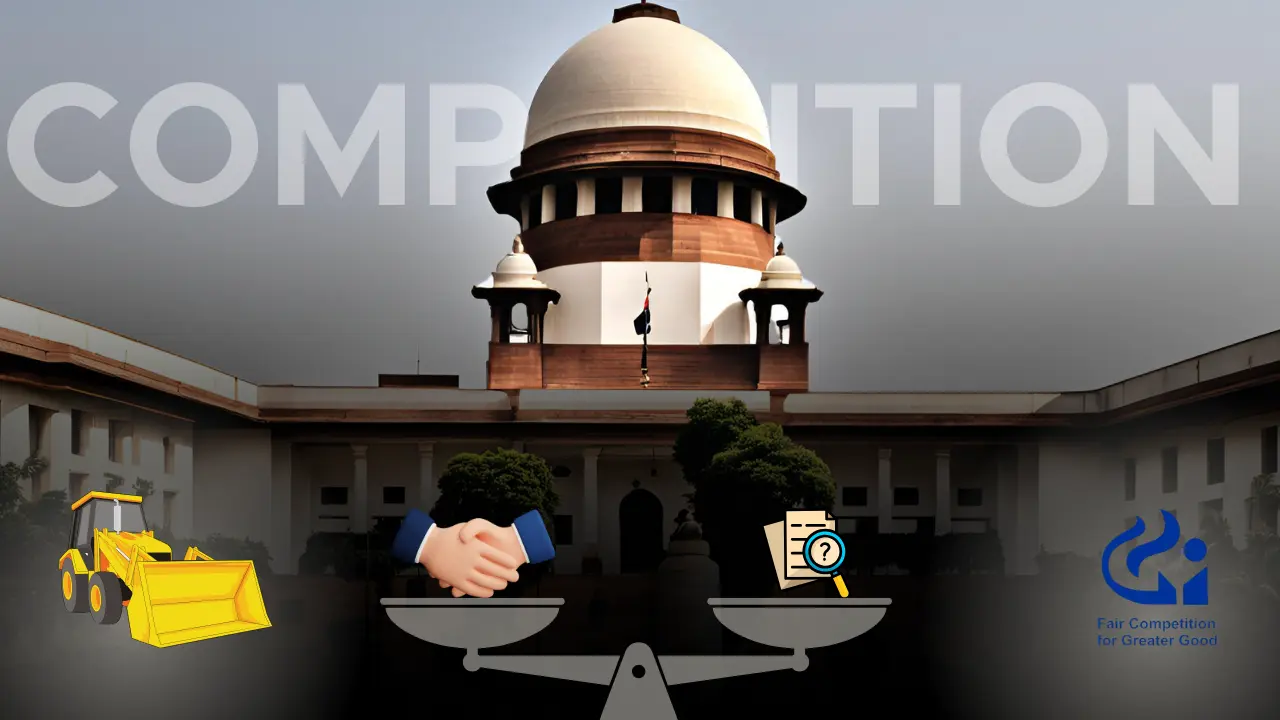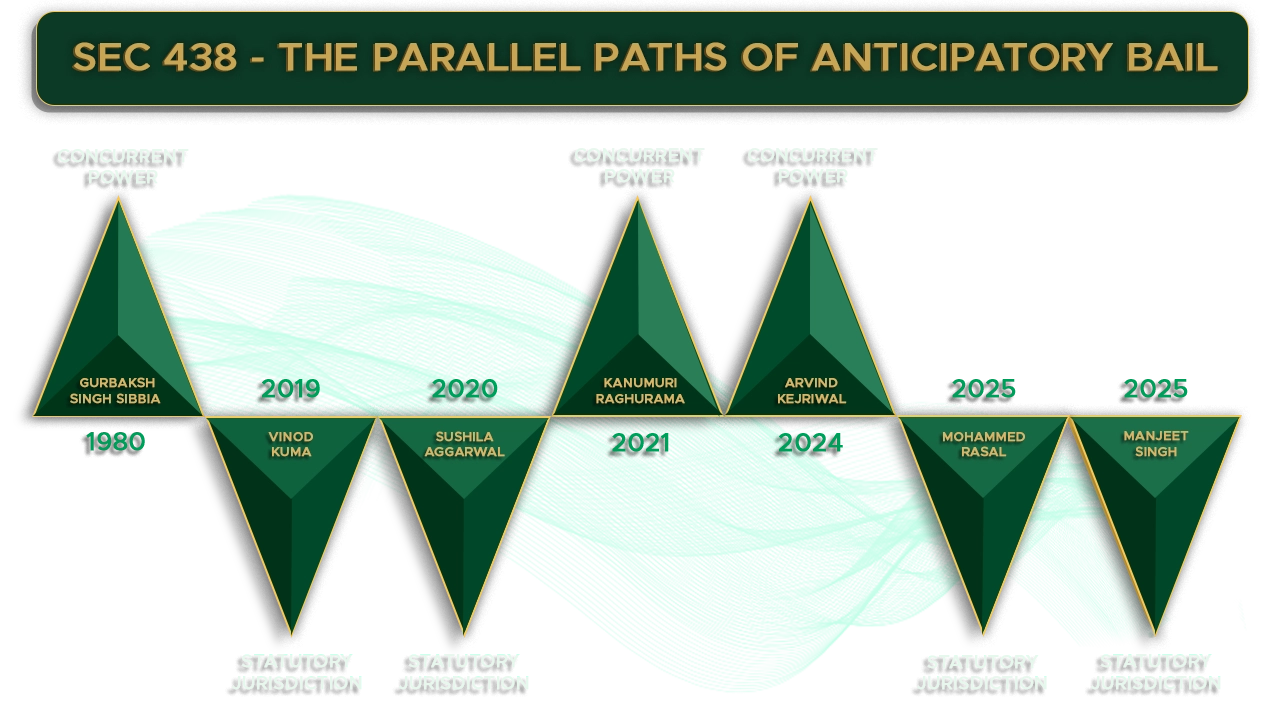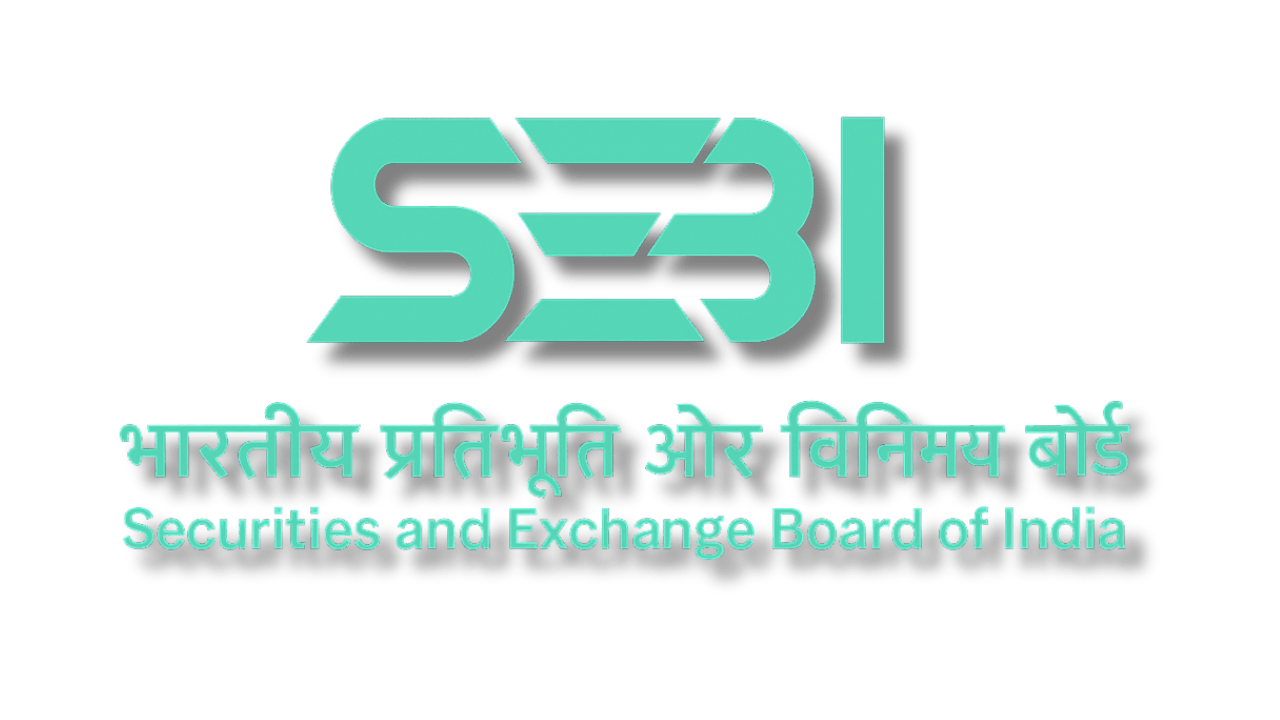A legal analysis of the Supreme Court’s decision in the CCI vs JCB India case, focusing on the limits of the Competition Commission of India’s jurisdiction post-settlement and its implications for competition law enforcement.
Introduction
The Competition Commission of India (CCI) filed an appeal in the Supreme Court challenging the Delhi High Court’s (HC) decision to set aside an inquiry against JCB India Limited (Competition Commission of India v. JCB India Limited and Others) over an alleged abuse of dominant position. The case was initiated by Bull Machines, an Indian manufacturer before being withdrawn following a settlement between the parties. The Supreme Court bench comprising Justices Abhay S Oka and Augustine George Masih upheld the Delhi High Court’s decision and said that it could not intervene in the matter as the CCI’s claims had no substantial support. This judgment raises significant questions regarding the CCI’s jurisdiction.
This article aims to establish whether CCI can continue its investigation after the parties have reached a settlement.
Chain of events
The dispute emanated from an intellectual property (“IP”) conflict between JCB India Limited and its parent company, JC Bamford Excavators Limited ( collectively “JCB”), and Bull Machines Private Limited (“Bull Machines”), wherein both parties were engaged in the manufacture of heavy equipment vehicles (backhoe loaders), utilised for road construction . Bull Machines filed an information before the CCI (Section 19(1)(a)) against JCB alleging inter alia that JCB had engaged in mala fide litigation and had obtained an ex-parte ad interim injunction order against the informant Bull Machines from the Hon’ble Delhi High Court based on misrepresentation of images and facts. The CCI found initial merit in Bull Machines’ allegations against JCB, noting that predatory litigation threatens competition in India. A detailed investigation was ordered by the CCI (Section 26 (1)) into this matter.
JCB challenged CCI’s investigation, arguing that the CCI could not label litigation as “predatory” or “sham” without a final decision from the court. It also challenged the scope of search and seizure it was being subjected to. While these challenges were pending before the Delhi HC, Bull Machines and JCB engaged in a court ordered mediation in relation to the underlying IP dispute and reached a settlement. This sought to dispose of all pending litigation cases including the one before the CCI.
The Delhi HC quashed CCI’s investigation but emphasized the importance of promoting alternative dispute resolution mechanisms. It also held that once the dispute itself is settled, the substratum of the competition law no longer exists and the investigation should not and cannot continue.
Dissatisfied with HC ruling, the CCI appealed the decision to the Supreme Court which upheld HC’s decision and dismissed the appeal. The court also criticized CCI for trying to attribute motives to the settlement.
Extent of CCI’s jurisdiction
The Competition Act, 2002, provides the CCI with extensive powers to investigate and adjudicate anti-competitive conduct under Sections 3 and 4, which prohibit anti-competitive agreements and the abuse of dominance, respectively. Section 19 outlines the assessment of such conduct, including evaluating its adverse effects on competition and defining the relevant market and the position of dominance. Furthermore, sections 26 and 27 of the Act prescribe the procedural framework for adjudication before the CCI and confer expansive powers upon the CCI to address violations of section 3 and 4, respectively.
Delhi High Court ruling in JCB India Limited and Anr v. The Competition Commission of India and Anr affirmed by the Hon’ble Supreme Court, narrows the CCI’s jurisdiction which seems at odds with the broader legislative intent behind its creation. It implies that if the informant and the opposite party settle, the CCI’s investigation should be closed, regardless of whether the CCI reviewed the settlement. This means that the anti-competitive behaviour would continue without any consequences as the CCI would not have the chance to take corrective action. It can be said that there is no yardstick to determine CCI’s jurisdiction and it is imperative that this existing overlap between authorities be addressed.
Whether the CCI proceedings should continue once a settlement is reached?
The Supreme Court upholding the decision of the High Court could potentially undermine the CCI’s endeavor to bring corrective action and eliminate anti-competitive practices in the relevant markets. The mere fact that the parties have reached a settlement should not restrict the Competition Commission’s ability to investigate and take actions as they deem fit. Reaching a settlement may not necessarily mean that the anticompetitive behaviour has also ceased. In fact, settlements could be masking the same. The expertise of this regulatory body should only be challenged or shunned once it is allowed to make a thorough investigation.
Conclusion
The Supreme Court’s decision has far-reaching implications for the regulatory landscape, highlighting the effectiveness of mediation as a dispute resolution mechanism. While some may argue that regulatory authorities should refrain from intervening and respect parties’ autonomy in resolving disputes amicably, it is crucial to acknowledge that regulatory authorities comprise competent experts who act judiciously and well within reasonable bounds and hence, should be allowed to carry out their investigations. They should however, ensure that the actions taken are proportionate to the severity of the anti-competitive behavior.






